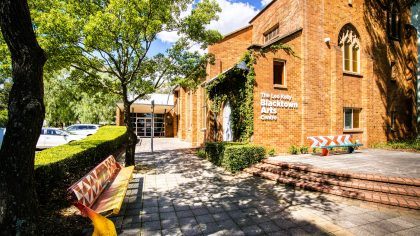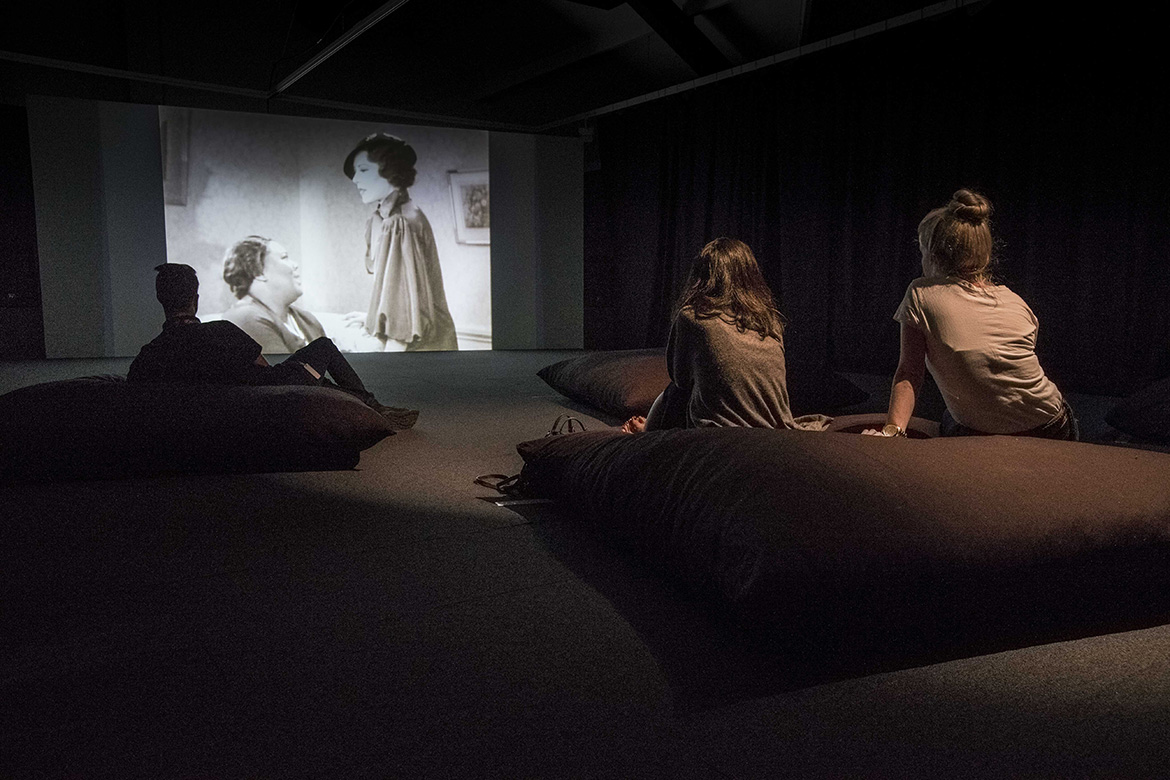
The Leo Kelly Blacktown Arts Centre
An innovative multi-arts hub in the heart of Blacktown City.
Bayadyinyang budyari Dharug yiyura Dharug Ngurra.
Bayady’u budyari Dharug Warunggadgu baranyiin barribugu.
Bayady’u budyari wagulgu yiyuragu Ngurra bimalgu Blacktown City. Flannel flowers dyurali bulbuwul.
Yanmannyang mudayi Dharug Ngurrawa. Walama ngyini budbud dali Dharug Ngurra Dharug yiyura baranyiin barribugu.
We acknowledge the Traditional Custodians of this Land, the Dharug people, and their continued connection to Country.
We pay our respects to Elders from yesterday to tomorrow.
We extend that respect to all Aboriginal and Torres Strait Islander Peoples of Blacktown City where the flannel flowers still grow proud and strong.
We will walk softly on this land and open our hearts to Country as the Dharug people have for tens of thousands of years.
Credit to: Dharug woman Rhiannon Wright, daughter of Leanne ‘Mulgo’ Watson Redpath and granddaughter of Aunty Edna Watson

The film industry has long cherished the romantic notion of the lone-genius auteur, despite the inherent collaborative nature of movie making (much like raising children, transferring dreams to celluloid takes a village). This makes for an added joy in the forced anonymity of the mashups created by Tracey Moffatt and Gary Hillberg, as they divorce scenes from their intended filmic narrative to create meta-commentaries on our cultural concerns.
This suite of montage films, produced over 16 years of collaboration between Moffatt and Hillberg, engage in a dialogue with the history of the moving image, and with the audience themselves, culling from cult classics, forgotten b-movies and blockbusters without discrimination. They play like the logical byproduct of our increasingly digital age, smartly anticipating the rise of the online supercut and video essay – the ‘readymade’ of the 21st century, where fans (and artists) recut and reframe existing films to either create their own story or draw attention to specifics of the director’s craft.
Shown separately, these pieces have maybe been overlooked in the past in favour of other elements of Moffatt’s artistic output. Stylistically, flashier and more labour-intensive pieces such as Christian Marclay’s real-time masterwork The Clock (2010) and documentaries like Thom Andersen’s informed and delightfully cranky Los Angeles Plays Itself (2003) have mined similar veins. However, gathered in one place and shown in a continuous loop Moffatt and Hillberg’s videos are dazzling and devastating love songs to the mechanics of cinematic stereotypes.
There’s a steely effectiveness in this repetition – love breaks down at 24 frames a second, the world’s end appears to be endlessly at hand. Some of the pieces engage in the precise emotional manipulation they’re exposing, whether playing the clichés for laughs in Artist or deliberately stringing together multiple tear-jerking moments in Mother. It doesn’t matter that you’re aware of what they’re doing and how, it still makes you want to cry.
Elsewhere, Other takes on the troubled eroticisation of the colonial gaze, and there’s a continued relevance in Lip’s succession of black actresses sassing their way through the extremely limited Hollywood roles open to them. And once Love takes a beautifully bitchy record-scratch into infidelity, Moffatt and Hillberg are unsparing, revealing the distressingly prevalent seam of domestic violence running through so many screen stories. It’s infinitely more confronting when there’s no context for the brutality we’re witnessing – not that there can ever be a justification – and it raises the uncomfortable question of audience complicity.
The collected montages of Moffatt and Hillberg present a rare opportunity to get film-schooled by an inspired pairing of iconoclastic artist and editor.
Montages: The Full Cut, 1999 – 2015 was curated and developed by Artspace, Sydney and is touring nationally in partnership with Museums & Galleries of NSW.